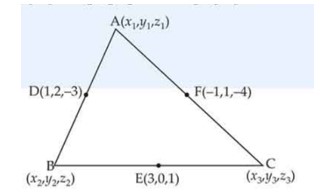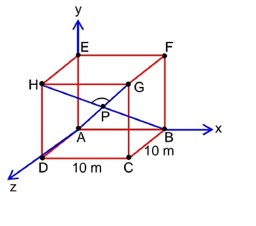Introduction to Three Dimensional Geometry
Get insights from 93 questions on Introduction to Three Dimensional Geometry, answered by students, alumni, and experts. You may also ask and answer any question you like about Introduction to Three Dimensional Geometry
Follow Ask QuestionQuestions
Discussions
Active Users
Followers
New answer posted
3 months agoContributor-Level 10
Let height of the wall = h than A(0, 0, 0) G (10, 10, h)
B(10, 0, 0) A (0, 10, h)
New answer posted
3 months agoContributor-Level 10
x + 2y + z = 14
Q (1 + t, 2 + 2t, 3 + t)
x + 2y + z = 14 ⇒ 1 + t + 4 + 4t + 3 + t = 14 ⇒ 6t = 6
t = 1
⇒ Q (2, 4, 4)
PQ =
ar (PQR) =
New answer posted
3 months agoContributor-Level 10
x + 2y + z = 14
Q (1 + t, 2 + 2t, 3 + t)
x + 2y + z = 14 -> 1 + t + 4 + 4t + 3 + t = 14 Þ 6t = 6
t = 1
-> Q (2, 4, 4)
PQ =
ar (PQR) =
New answer posted
4 months agoContributor-Level 10
Sum of all elements of [Sum of natural number upto 100 which are neither divisible by 3 nor by 5]
= 10100 – 3366 – 2100 + 630
= 5264
New answer posted
4 months agoContributor-Level 10
This is a Fill in the blanks Type Questions as classified in NCERT Exemplar

Taking an Exam? Selecting a College?
Get authentic answers from experts, students and alumni that you won't find anywhere else
Sign Up on ShikshaOn Shiksha, get access to
- 65k Colleges
- 1.2k Exams
- 679k Reviews
- 1800k Answers


 and n are coprime, then m + n is equal to………
and n are coprime, then m + n is equal to………